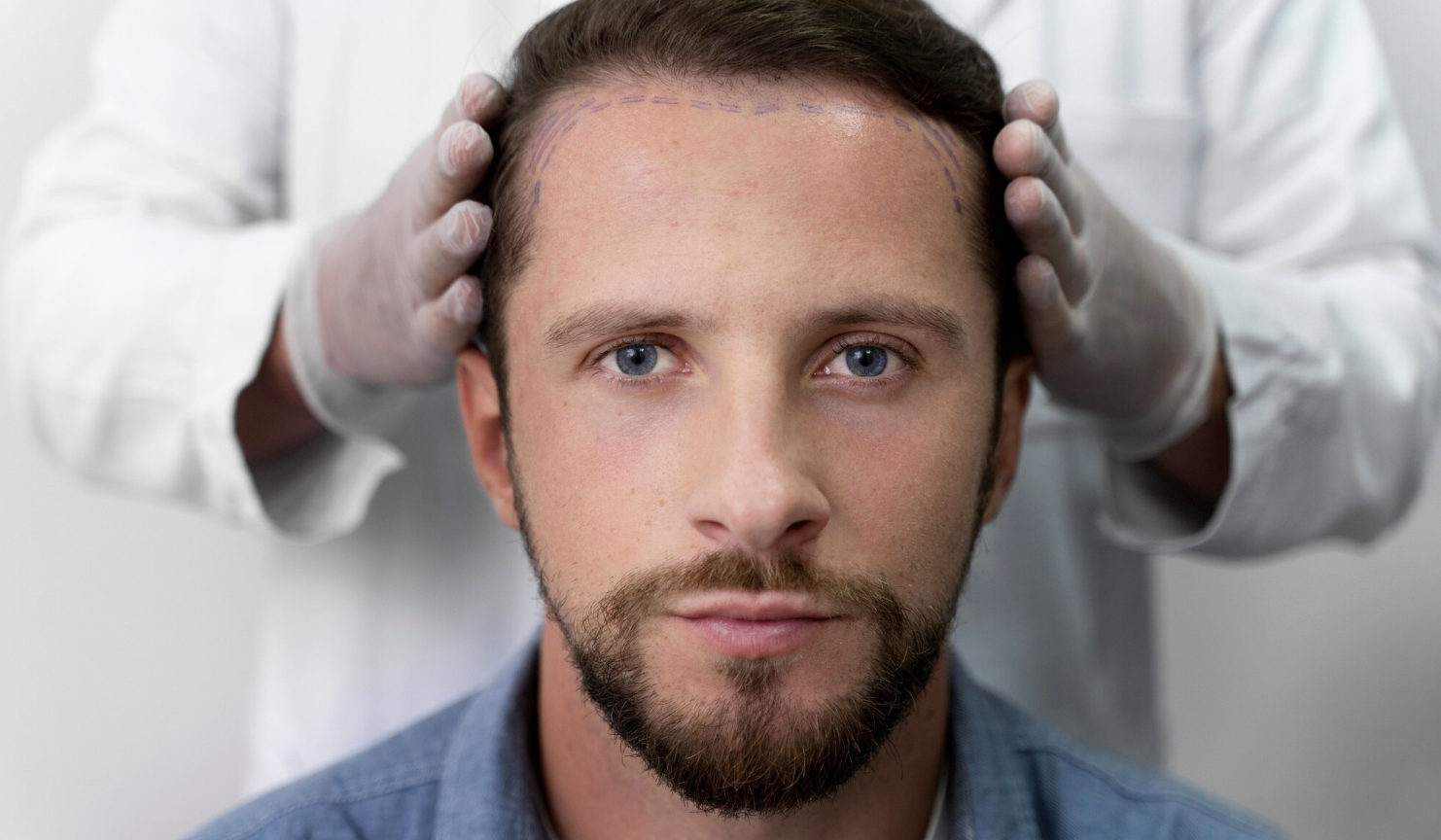
Understanding Unshaven Hair Transplant: A Revolutionary Approach to Hair Restoration
Hair transplant procedures have come a long way, evolving from techniques that left noticeable scars to advanced methods that offer natural and virtually undetectable results. Among these innovations is the unshaven hair transplant, a procedure that allows patients to restore their hair without the need to shave the donor or recipient areas. This technique is gaining popularity, particularly among individuals who want to maintain their existing hairstyle without the visible signs of surgery. In this comprehensive guide, we’ll explore what an unshaven hair transplant is, how it works, its benefits, and considerations for potential candidates.
What is an Unshaven Hair Transplant?
An unshaven hair transplant, also known as non-shaven FUE (Follicular Unit Extraction), is a specialized hair restoration procedure where the patient’s hair is left unshaven, or only partially shaved, during the transplant process. Unlike traditional FUE, which requires the donor area to be completely shaved, this technique allows patients to undergo the procedure while keeping their existing hair intact, making the surgery less noticeable.
How Does Unshaven Hair Transplant Work?
The unshaven hair transplant follows the same principles as the traditional FUE method but with modifications to accommodate the unshaven hair. Here’s how it works:
- Donor Area Selection: The surgeon identifies the donor area, typically the back or sides of the scalp, where healthy hair follicles are abundant. In an unshaven hair transplant, instead of shaving the entire donor area, only tiny portions may be trimmed, or the hair is parted to allow access to the follicles.
- Follicle Extraction: Using specialized tools, the surgeon carefully extracts individual hair follicles from the donor area. The surrounding hair remains unshaven, which helps to conceal the extraction sites immediately after the procedure.
- Recipient Site Preparation: The surgeon prepares the recipient area by making tiny incisions where the extracted follicles will be implanted. The existing hair in the recipient area is not shaved, allowing for a more seamless integration of the transplanted follicles with the natural hair.
- Follicle Implantation: The extracted follicles are then meticulously implanted into the recipient sites, following the natural direction and pattern of the patient’s hair. This step is crucial to achieving a natural-looking result.
- Post-Procedure Care: After the surgery, the patient’s existing hair helps to cover the donor and recipient areas, making the recovery process more discreet. The newly transplanted hair will initially shed before beginning to grow in its natural cycle.
Benefits of Unshaven Hair Transplant
The unshaven hair transplant offers several advantages that make it an appealing option for many patients:
- Discreet Recovery: One of the most significant benefits is the ability to maintain your existing hairstyle without the need for a noticeable shave. This makes the recovery process more discreet, as the unshaven hair helps to conceal any signs of surgery.
- Immediate Return to Normal Activities: Since there’s no need to wait for the shaved areas to grow back, patients can return to their daily routines and social activities more quickly, without the worry of visible surgical marks.
- Natural-Looking Results: By preserving the existing hair, the unshaven hair transplant allows for a more natural blend between the transplanted and original hair, enhancing the overall appearance.
- Reduced Psychological Impact: For many patients, the idea of shaving their head for a hair transplant can be a significant psychological barrier. The unshaven technique eliminates this concern, making the procedure more accessible and appealing.
- Suitable for Various Hair Lengths: The unshaven method can be performed on patients with different hair lengths, making it versatile and suitable for individuals who prefer to keep their hair long.
- Minimally Invasive: Like traditional FUE, the unshaven hair transplant is minimally invasive, resulting in less discomfort, faster healing, and minimal scarring.
Considerations for Unshaven Hair Transplant
While the unshaven hair transplant offers numerous benefits, there are also some considerations to keep in mind:
- Longer Procedure Time: The unshaven technique requires more precision and time than a traditional FUE procedure, as the surgeon must carefully work around the existing hair. This can result in longer surgery times.
- Cost: Due to the additional time and skill required, unshaven hair transplants are typically more expensive than traditional FUE procedures.
- Limited Graft Availability: Depending on the patient’s hair density and the extent of hair loss, the unshaven method may limit the number of grafts that can be harvested and transplanted in a single session.
- Suitability: Not all patients are ideal candidates for an unshaven hair transplant. The technique is best suited for individuals with sufficient hair density in the donor area to conceal the extraction sites and those who prefer to keep their hair long.
- Experienced Surgeon Required: The unshaven hair transplant is a specialized procedure that requires a high level of skill and experience. It’s essential to choose a qualified and experienced hair transplant surgeon to ensure optimal results.
Who is a Good Candidate for Unshaven Hair Transplant?
Ideal candidates for an unshaven hair transplant include:
- Individuals with Early-Stage Hair Loss: Patients in the early stages of hair loss who still have a significant amount of hair in the donor and recipient areas are good candidates, as their existing hair will help conceal the surgery.
- Those Who Prefer to Keep Their Hair Long: If you prefer to maintain your current hairstyle and avoid the shaved look, the unshaven hair transplant is an excellent option.
- Patients Seeking a Discreet Procedure: If you want a hair transplant without the telltale signs of surgery, the unshaven technique offers a more discreet solution.
- Individuals with a History of Successful FUE Procedures: Patients who have previously undergone a successful FUE transplant and are looking to enhance or refine their results may benefit from the unshaven method.
Recovery and Results
The recovery process following an unshaven hair transplant is similar to that of a traditional FUE procedure, with some added advantages:
- Minimal Downtime: Most patients can return to work and normal activities within a few days, as the unshaven hair helps to conceal any signs of the procedure.
- Mild Discomfort: Some swelling, redness, and mild discomfort are common in the first few days, but these symptoms typically subside quickly.
- Shedding Phase: As with all hair transplants, the newly transplanted hair will go through a shedding phase before entering the growth phase. This is a normal part of the process, and new hair growth will begin within a few months.
- Long-Term Results: Full results can be expected within 12 to 18 months, with the transplanted hair blending seamlessly with the existing hair for a natural look.
FAQs about Unshaven Hair Transplant
1. Is the unshaven hair transplant suitable for everyone?
The unshaven hair transplant is best suited for individuals with sufficient hair density in the donor area and those who wish to avoid shaving their head. However, not all patients are suitable candidates, and a consultation with a qualified surgeon is essential.
2. How long does the unshaven hair transplant procedure take?
The procedure time varies depending on the number of grafts needed and the complexity of the case. On average, it can take several hours to a full day.
3. How much does an unshaven hair transplant cost?
The cost of an unshaven hair transplant is generally higher than traditional FUE due to the additional time and expertise required. Prices vary based on the clinic, surgeon, and number of grafts.
4. How soon can I see results from an unshaven hair transplant?
Initial results can be seen within a few months, but full results will take 12 to 18 months as the transplanted hair grows and blends with the existing hair.
5. Are there any risks associated with an unshaven hair transplant?
As with any surgical procedure, there are risks, including infection, scarring, and unsatisfactory results. However, these risks are minimized when the procedure is performed by an experienced surgeon.
6. Can I style my hair immediately after an unshaven hair transplant?
It’s recommended to avoid styling, coloring, or applying any products to the hair for the first few weeks after the procedure to allow the transplanted follicles to heal.
7. Will the unshaven hair transplant leave scars?
The unshaven FUE technique is designed to minimize scarring, with tiny extraction points that are typically concealed by the surrounding hair.
8. How do I prepare for an unshaven hair transplant?
Your surgeon will provide specific pre-operative instructions, which may include avoiding certain medications, alcohol, and smoking. It’s also essential to follow any hair care guidelines provided.
9. Can I combine an unshaven hair transplant with other hair restoration treatments?
Yes, an unshaven hair transplant can be combined with other treatments like PRP therapy or scalp micropigmentation to enhance results.
10. How do I choose the right surgeon for an unshaven hair transplant?
Choose a board-certified surgeon with extensive experience in unshaven hair transplant techniques. Review their credentials, patient testimonials, and before-and-after photos to ensure they have a proven track record of success.
Conclusion
The unshaven hair transplant is a groundbreaking advancement in hair restoration, offering patients the ability to regain their hair without the need to shave their scalp.




